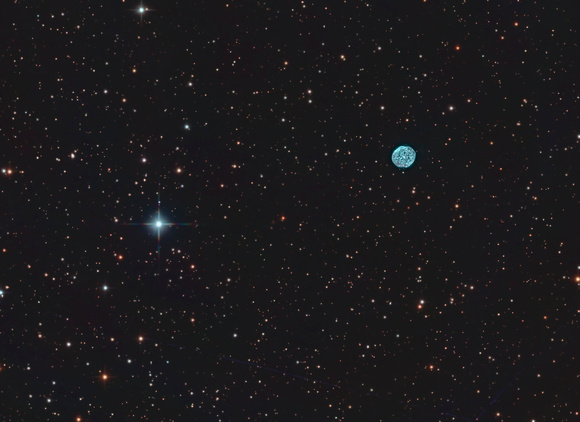NGC1501 Oyster PN
Filamentary! – NGC 1501 “Oyster” Planetary Nebula in NB/RGB (Camelopardalis)
Planewave CDK12.5; AP 1100GTO AE
ASI6200MM, - Antlia Pro RGB & 3.5nm NB filters
Ha/O: (29,23 x 420s exposures, Bin 1x1, Gain 200)
R,G,B: (18,16 ,16 x 150s, Bin 1x1, Gain 100)
Total Integration Time = 8.2 hours – August 2023
NGC 1501, aka the Oyster Nebula, is quite different from most other planetary nebulae in that it is appears as filaments, primarily in O signal, much akin to the structure of Wolf-Rayet stars/nebulae. The central proginator in a carbon-rich pulsating star that varies in brightness on a regular rhythm with an extremely short period of about half an hour – although I struggled to “see” this variation with my 150s subframes. The explanation for this pulsing is that the central star is actually a binary, according to Gaia data.
What I struggle to understand is if the proginator star is not a white dwarf, but more akin to Wolf-Rayet star, and the nebula looks like a Wolf Rayet nebula, why isn’t it classified as a Wolf-Rayet?
Although very small, this nebula is very bright and readily imaged, even in RGB data alone. The nebula is dominated by O/blue/green signal, with only a minor amount of non-correlated Ha/R contribution The ability to resolve the filamentary details, however, is dependent on telescope aperture, rather than filters.


